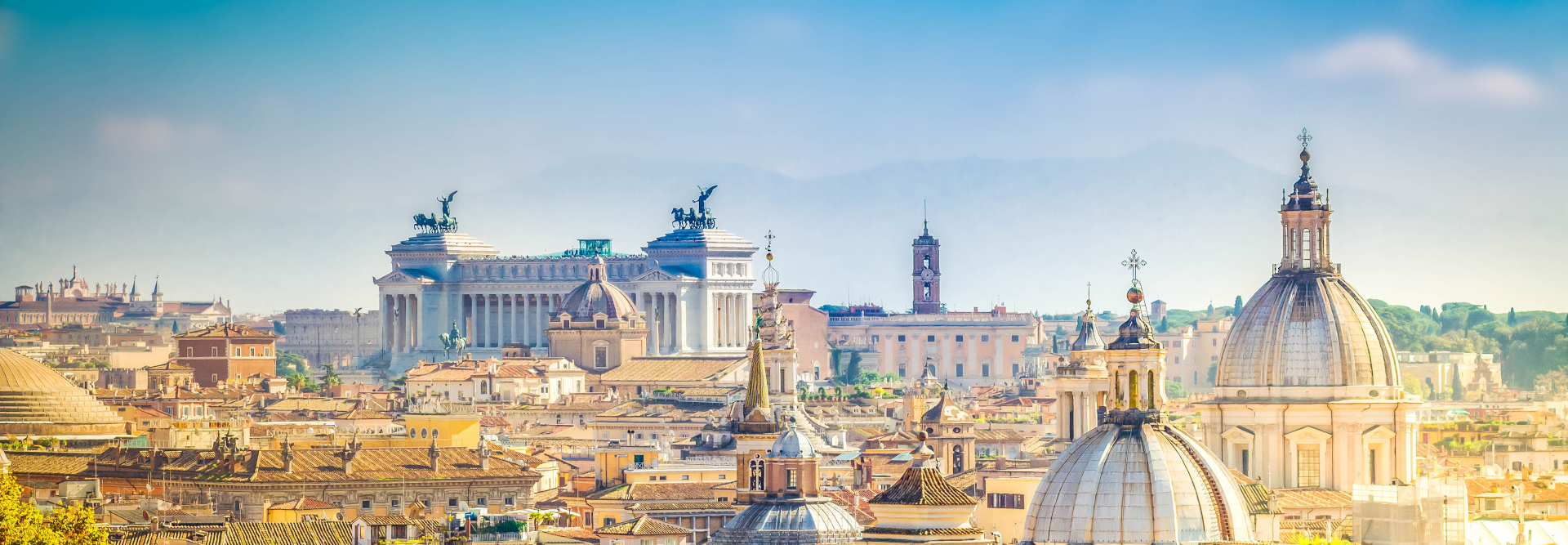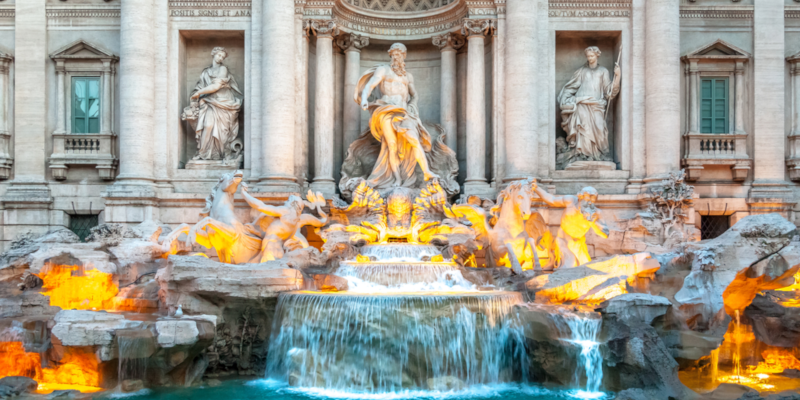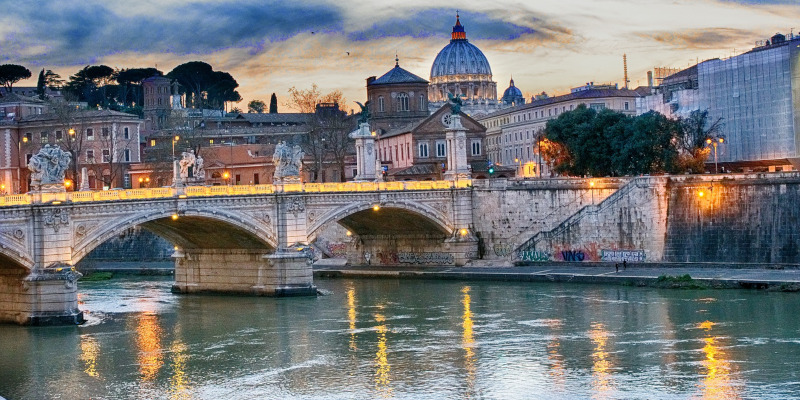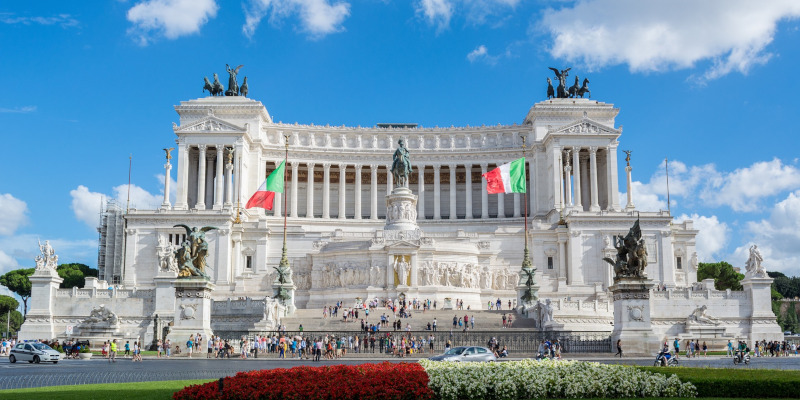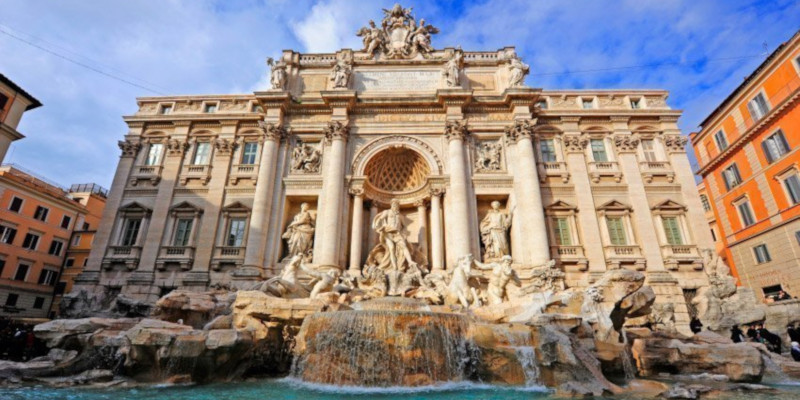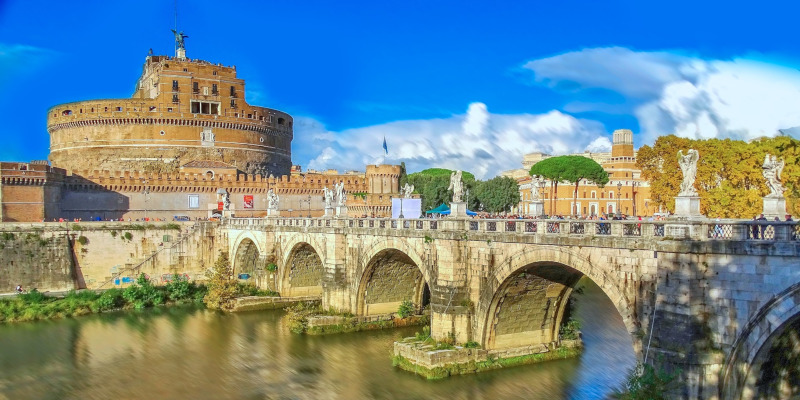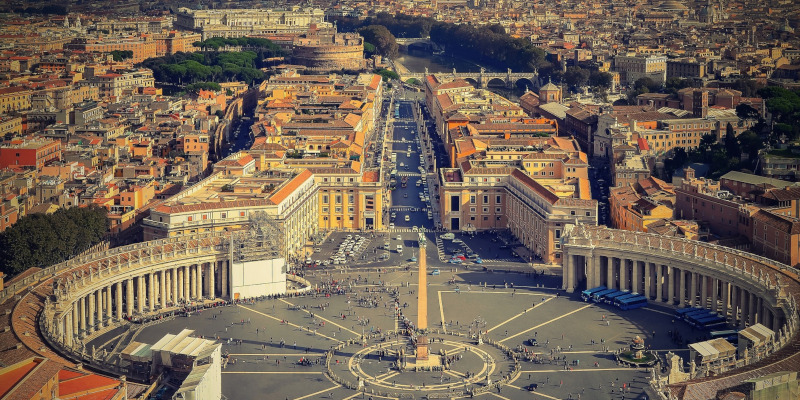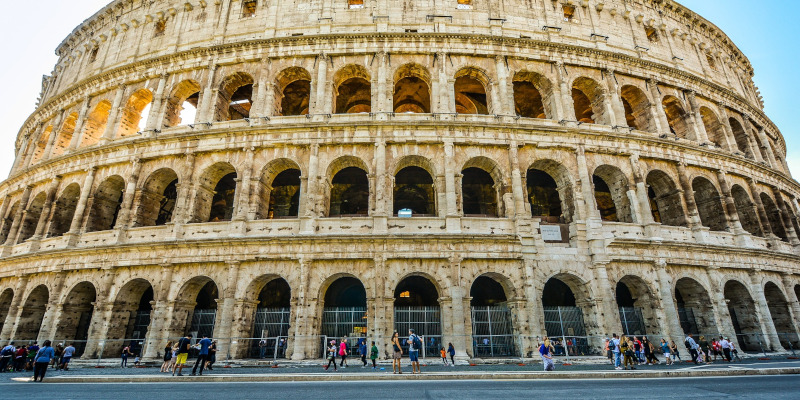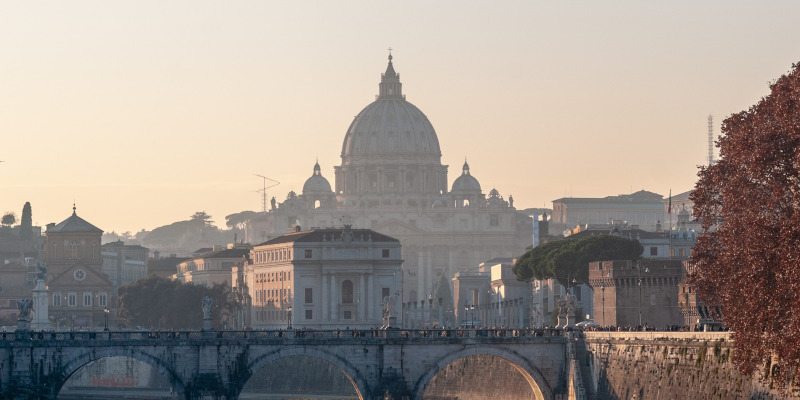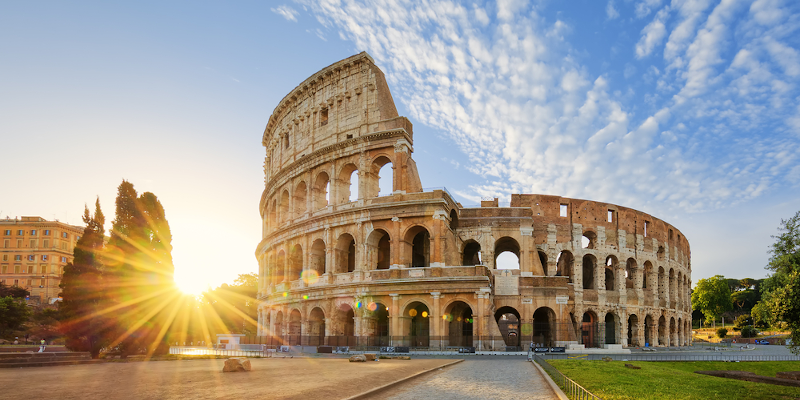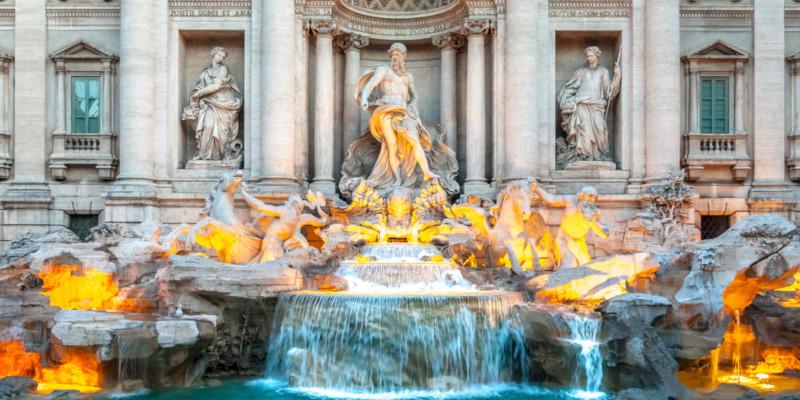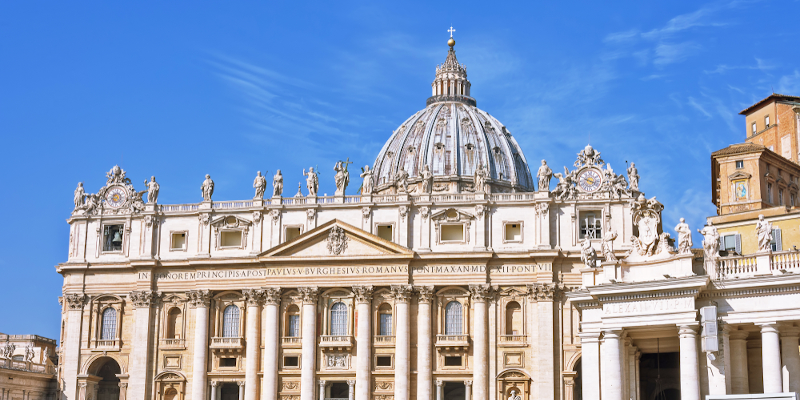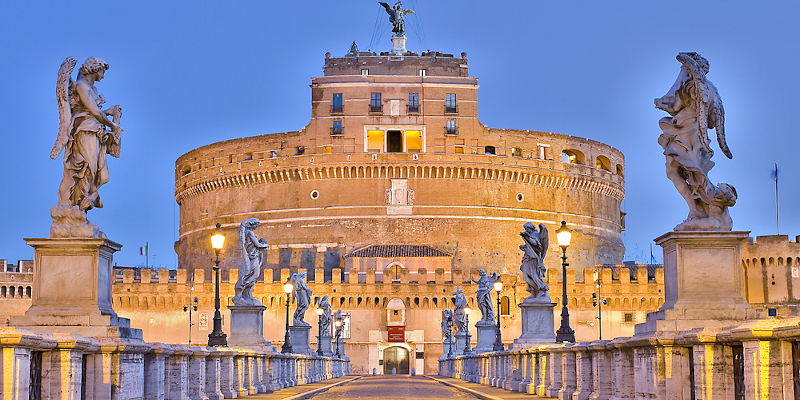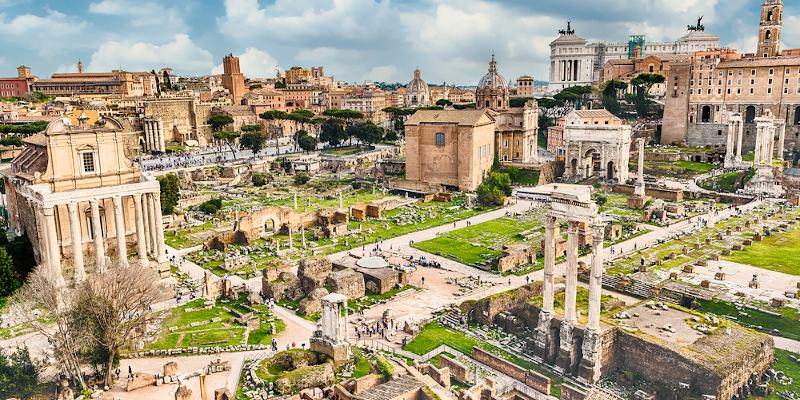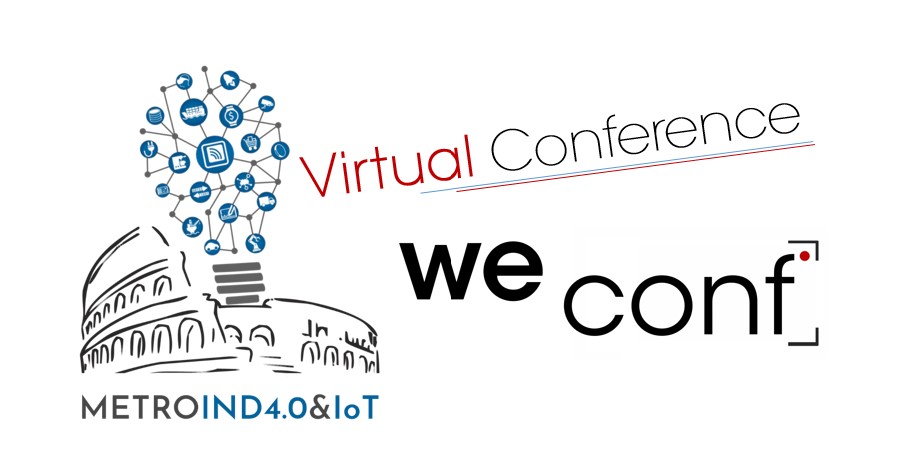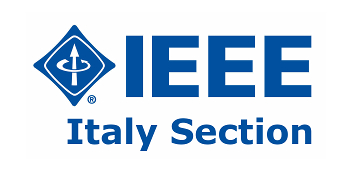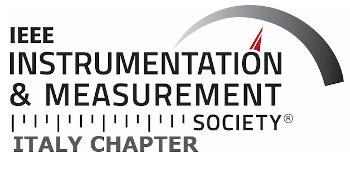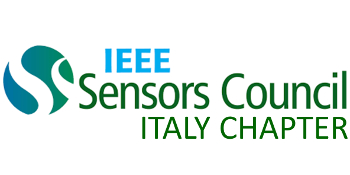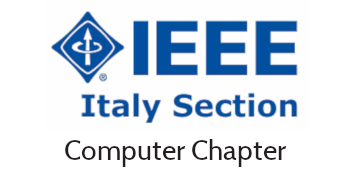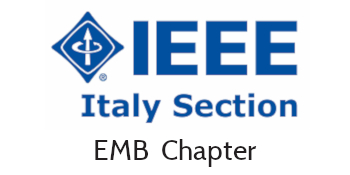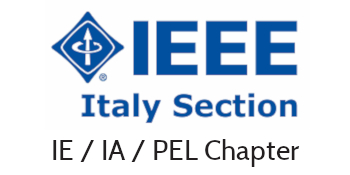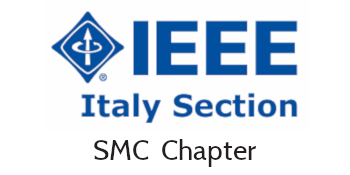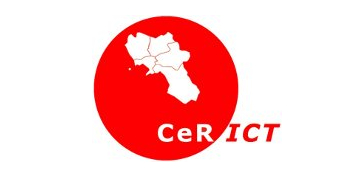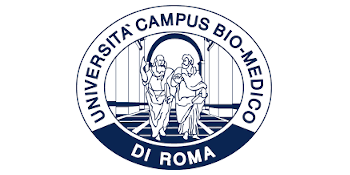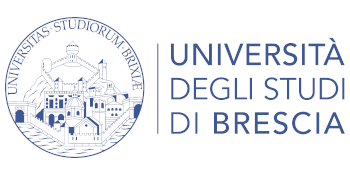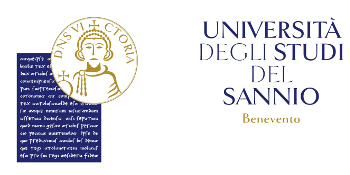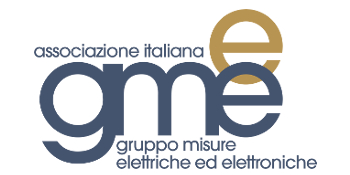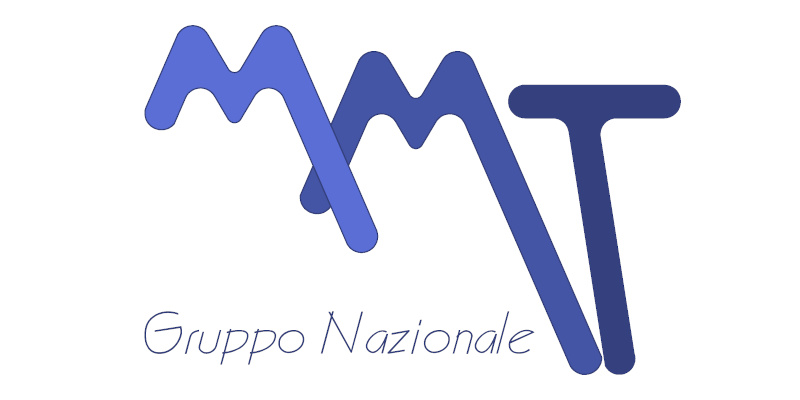Rome was called the “Eternal City” by the ancient Romans because they believed that no matter what happened in the rest of the world, the city of Rome would always remain standing. Exploring the city centre by foot surrounded by glorious monuments and colossal remains takes you back in time to the “glory that was Rome”.
Why visit Rome?
With its unparalleled history, Rome is the third most visited city in Europe and the fourteenth worldwide. It attracts visitors from all over the world who are impatient to discover the city’s impressive monuments and archaeological sites; not to mention its renowned cuisine and its lively atmosphere.
When exploring the Colosseum, visitors will easily imagine how the gladiators fought for their life in the arena, cheered by the crowd. In the Circus Maximus, travelers will picture the chariots crashing into each other in order to be first in the race, and in the Roman Forum visualise what the Roman public life was like.
The Colosseum
The Colosseum is the main symbol of Rome. It is an imposing construction that, with almost 2,000 years of history, will bring you back in time to discover the way of life in the Roman Empire.
The construction of the Colosseum began in the year 72 under the empire of Vespasian and was finished in the year 80 during the rule of the emperor Titus. After completion, the Colosseum became the greatest Roman amphitheatre, measuring 188 meters in length, 156 meters in width and 57 meters in height.
The Trevi Fountain
Trevi Fountain is the most beautiful fountain in Rome. Measuring some 20 meters in width by 26 meters in height, Trevi Fountain is also the largest fountain in the city.
The origins of the fountain go back to the year 19 B.C., in which period the fountain formed the end of the Aqua Virgo aqueduct. The first fountain was built during the Renaissance, under the direction of Pope Nicholas V.
The final appearance of the Trevi Fountain dates from 1762, when after many years of works at the hand of Nicola Salvi, it was finalized by Giuseppe Pannini.
Interestingly enough, the name of Trevi derives from Tre Vie (three ways), since the fountain was the meeting point of three streets.
St. Peter's Basilica
Saint Peter's Basilica, the world's largest church, is the center of Christianity. The imposing structure was built over a span of more than one hundred years by the greatest Italian architects of the era.
The church is built on Vatican Hill, across the Tiber river from the historic center of Rome. The location is highly symbolic: this was the site where Saint Peter, the chief apostle, died a martyr and where he was buried in 64 AD. St. Peter is considered the first pope, so it made perfect sense for the papacy to build the principal shrine of the Catholic church here.
Castel Sant'Angelo
Originally built in the second century as a mausoleum for Emperor Hadrian, Castel Sant'Angelo (Castle of the Holy Angel) was later transformed into a large castle where popes could take refuge in turbulent times.
astel Sant'Angelo, situated on the right bank of the Tiber river, has had a turbulent history, even by Rome's standards. During its many years of existence, the building functioned first as a mausoleum, then became part of the city wall and later was turned into a fortress before it functioned as a papal residence and finally as a barracks and military prison. It is currently a national museum.
Forum Romanum
The Forum Romanum was the center of life in Imperial Rome, evidenced by the many remains of triumphal arches, temples and basilicas.
Until 509 BC, when Rome became a republic, the city was reigned by an Etruscan dynasty of Tarquin Kings. They built a sewer, the 'Cloaca Maxima', to drain water from the marshlands of the valley between the Palatine, Capitoline and Esquiline hills to the Tiber river.
From then on the area became a center of activity and it was the political heart of Rome until the fall of the Roman Empire more than one thousand years later. It was the site of the first forum. Here, triumphal processions took place, elections were held and the Senate assembled.
